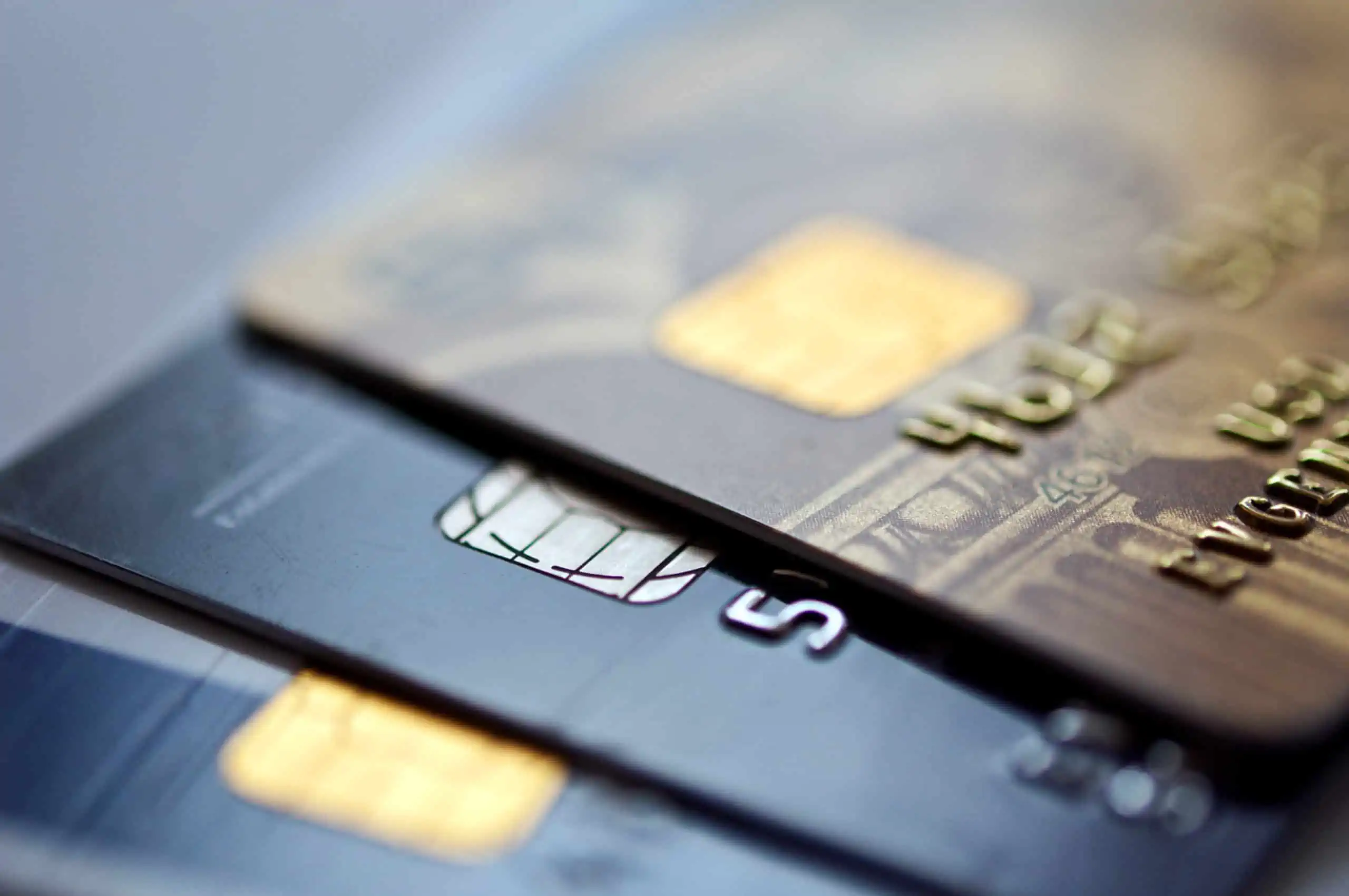What Is A 0% Balance Transfer & How Can It Be Useful?
This post may have affiliate links. Please read the Disclosure Policy for complete details.
0% balance transfer offers were hot back in the mid-2000s.
They were a big topic when it came to money-saving tips.
There were many more financial institutions back then and they all made these offers widely available.
Some people used them to help get out of debt.
Others used them as a mechanism for making money.
We’ll get deeper into that in a little bit.
First, I want to reiterate something:
Credit cards aren’t free loans.
0% balance transfer offers are no different.
In fact, they can more dangerous if you aren’t careful.
That’s why I want to go over all of the aspects of the balance transfer with you so you have all of the info to make an informed decision.
What Is A Balance Transfer?

It would make sense to start at the very beginning, right?
A balance transfer is simply taking money from the available balance of one credit card and transferring that to another card or deposit account.
When it first came to be, the balance transfer was only able to be used to pay a balance on another credit card.
Over time, it evolved to include being able to move balances from store charge cards and even have the money sent directly to your bank account.
One thing that you cannot do is a transfer between accounts at the same bank (Chase card to Chase card for example).
The lengths, like anything, are variable.
Some offers are good for only 3 months, while others can be for as long as 15 or 18 months.
Basically, a balance transfer is a bribe by the bank issuing the credit card, similar to offers for switching banks.
The bank offers a 0% (or low-rate) balance transfer to entice you to bring your balance over there.
Why?
What Is A Balance Transfer Fee?

The entire purpose of bribing you to bring your debt to the new bank is simple:
Money!
Right off the bat, the new bank will charge you a fee to complete the balance transfer.
This fee is generally between 3% and 5% of your transferred balance.
There’s usually a minimum specific dollar amount as well.
This is the bank’s way of ensuring it makes money.
If you take advantage of a 0% balance transfer and pay off the entire amount by the due date, then the bank makes no money on its loan to you.
Remember: credit cards aren’t free money but a loan that requires repayment.
By charging you for the privilege of getting that 0% rate the banks are guaranteed to make a profit, no matter how small.
It’s also important to keep this fee in mind when moving forward with a transfer.
How Does A Balance Transfer Work?

The credit card issuers make it really easy to complete a balance transfer.
If you are doing the balance transfer with an existing credit card you simply:
- Log into your account
- Navigate to the offer
- Enter the account number of the credit card you want to pay, or
- Enter your bank account info
- Enter the amount
- Accept the terms
That’s pretty much it–6 steps to a completed application for a transfer.
If you are doing the transfer with a new card application, you give the information right there in the application.
Granted, the bank still has to process and approve it regardless of which of these two situations apply.
Once it has been accepted, the bank that issues your “sending” card sends the money to the old card’s issuer.
The money gets applied to reduce the balance of the old card while that amount plus the transfer fee (see the previous sections) gets applied to your new card’s balance.
It’s really as simple as that.
You also can do it by writing a check–though it’s a special kind tied to the credit card account.
And I’m sure most banks will allow for the process to be completed over the phone, too.
How Much Can I Transfer?

Some people will say that you can do a balance transfer for whatever is available on your credit card’s limit.
That isn’t entirely true.
Remember the fee we discussed?
Well, that fee gets added to the amount you want to pay off or have deposited into your bank account.
In turn, that reduces the amount you have available to send to the old credit card.
For example:
You have a $1,000 limit on a credit card with a 0% balance transfer promo.
There is a 5% fee to do a transfer.
Your old card has $975 left on it that you want to pay off with the transfer.
Looking at your new card’s balance, you’d think you can wipe out that old balance, but you’re forgetting about the transfer fee.
The available balance you will need on the new card will be $1,023.75.
We arrive at that figure by calculating the fee–$975 of the desired transfer amount multiplied by the 5% balance transfer fee–of $48.75
We then add the $48.75 fee to the $975 you want transferred to come up with a total of $1,023.75.
You simply don’t have enough available credit on the new card to pay off the old one entirely with a transfer.
So, you see, you have to be aware of the balance transfer fee and factor that into your plans to know exactly how much you can transfer.
Some banks also place a hard dollar limit on how much you can transfer, and that will also be listed in the terms which you can review before taking any action.
Using Balance Transfer Funds
If you remember all the way back to the opening I mentioned two things people used balance transfers for:
- Managing money (ie: pay off debt)
- Build wealth (a/k/a make money)
The first part, paying off debt, comes in the form of the 0% offer.
By transferring all or part of your debt to an interest-free credit card, or even a lower-interest one, you are giving yourself time to get ahead of the interest.
You’re freezing the debt and locking in the principle for a set amount of time.
Without interest being charged on every credit card statement, all of your payment goes toward that principal which is how you eliminate debt.
As for the second part, building wealth, it’s relatively straightforward.
People would take the 0% balance transfer offer and transfer as much as they can to their bank account.
From there, it would go into building a CD ladder or a high-yield savings account.
Some people would choose to invest the money, but the goal was to use the time during which no interest was being charged to earn guaranteed returns.
The 0% Interest Can Be Revoked
The 0% interest is part of the contract you agree to when you approve the transfer request.
That means as long as your account is in good standing, the rate will not change.
That all goes out the window if your account falls out of good standing.
If you miss a payment, have a rejected payment, or cannot pay at least the minimum amount due, that is considered not to be in good standing.
If any of those events occur, the bank has the right to revoke the 0% and replace it with what is called a “penalty rate“.
Of course, that’s in addition to the standard fees for late/rejected payments, so you want to be very careful.
What Happens If You Don’t Pay Off The Transfer?
There are two similar types of 0% interest offers.
One is a “deferred interest plan” as you see in furniture stores.
These types of credit plans let you walk out of the store with your purchase and a plan to pay off the purchase within a certain period of time with the interest being 0% if you complete the payments by the end of the term.
The interest, however, starts accruing (adding up) from the moment of purchase.
If you don’t complete the payments by the term end date, then all of that accumulated interest becomes added to your balance.
0% interest credit card balance transfer offers are a little different.
The concept is similar in that you get a certain amount of time to pay without any interest being added.
The difference is that if you don’t complete the payments by the end of the term, you only start getting charged interest on the balance at the end of the period going forward.
Once your promotional period ends, whatever balance that remains will convert to a new principal balance and be subjected to a new interest rate based on your credit qualifications and the terms outlined in the credit agreement.
You do, however, have the option to do another balance transfer of the remaining balance to yet another card if you qualify!
Bad Credit could Make This Moot

Like with any credit offer, everything is contingent on you getting approved.
There are no guarantees that any of this will apply to you if you have a bad credit history or are very behind on your obligations.
There are three reasons why you might not be able to get approved for a new credit card or a balance transfer offer:
- If your credit score is negatively impacted by your spending habits on your existing credit lines, the odds are good that you will not even qualify for new lines.
- If you aren’t in a bad enough position to be denied new credit lines outright, you will most likely be offered a low line of credit on a new card.
- The advertisements you see are only for the most qualified applicants. You are not guaranteed to get those terms, and what’s more, is you may not even qualify for any balance transfer at all. Balance transfers are not ordinary features of credit cards that are available to all holders. You may be offered a reduced repayment period or a lower-than-normal interest rate, but the terms are decided on a case-by-case basis.
There really isn’t anything you can do in this situation other than to work on improving how the credit bureaus see you and then try again.
Wrapping Up
Well, there you have it!
That is practically everything you need to know about the credit card balance transfer.
It’s really not that complex of a topic, but since credit cards are often misused, I thought it would be a good idea for you to know all of this.
Hopefully, you’re looking for this info because you want to use it to make your money work for you and not because you’re having financial issues.
On the other hand, if you are taking advantage of the 0% interest to try to get out of debt, I wish you luck and hope that you learn from past mistakes to stay out of debt in the future!
Your Turn
Have you done a balance transfer before? Was it for one of the two reasons mentioned, or was it for something entirely different? Are you planning on doing on and just wanted to educate yourself (and did this help)?

